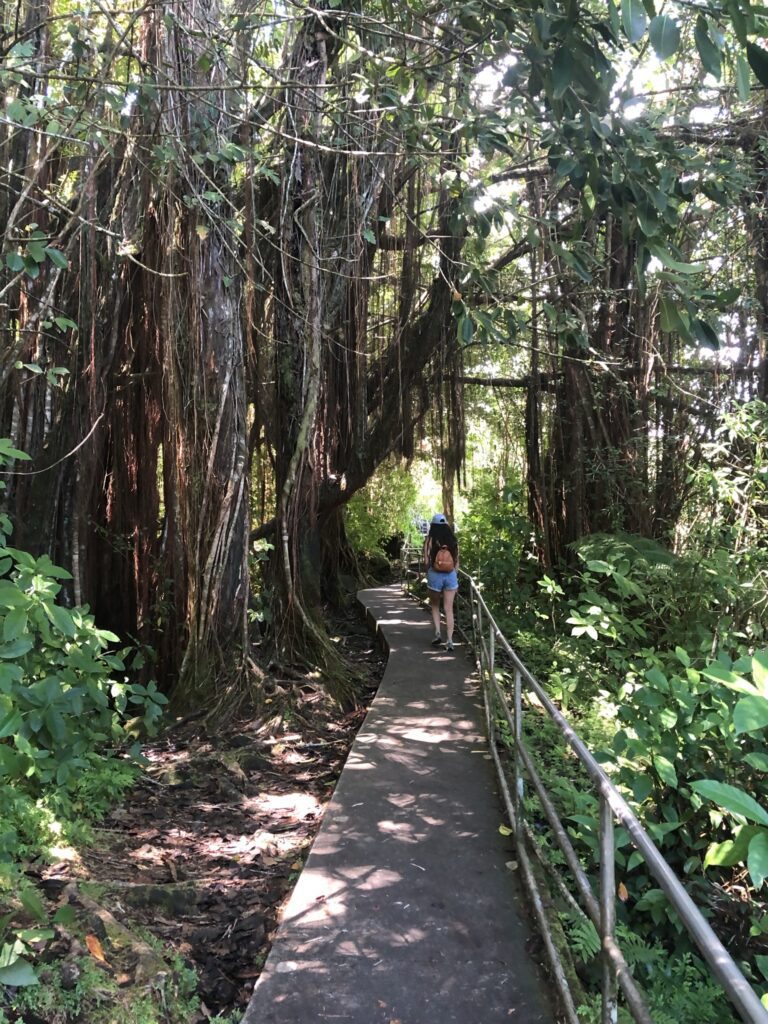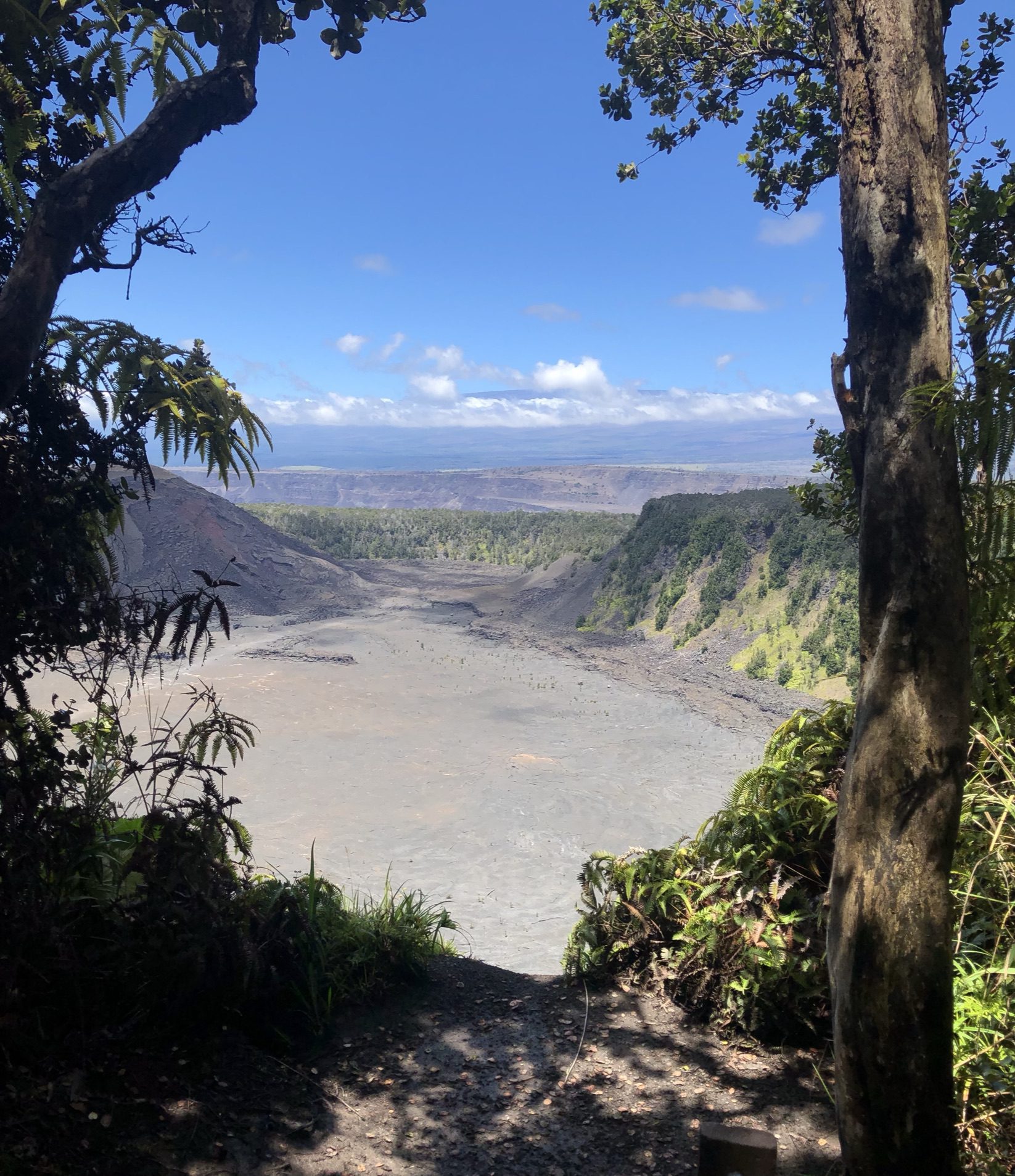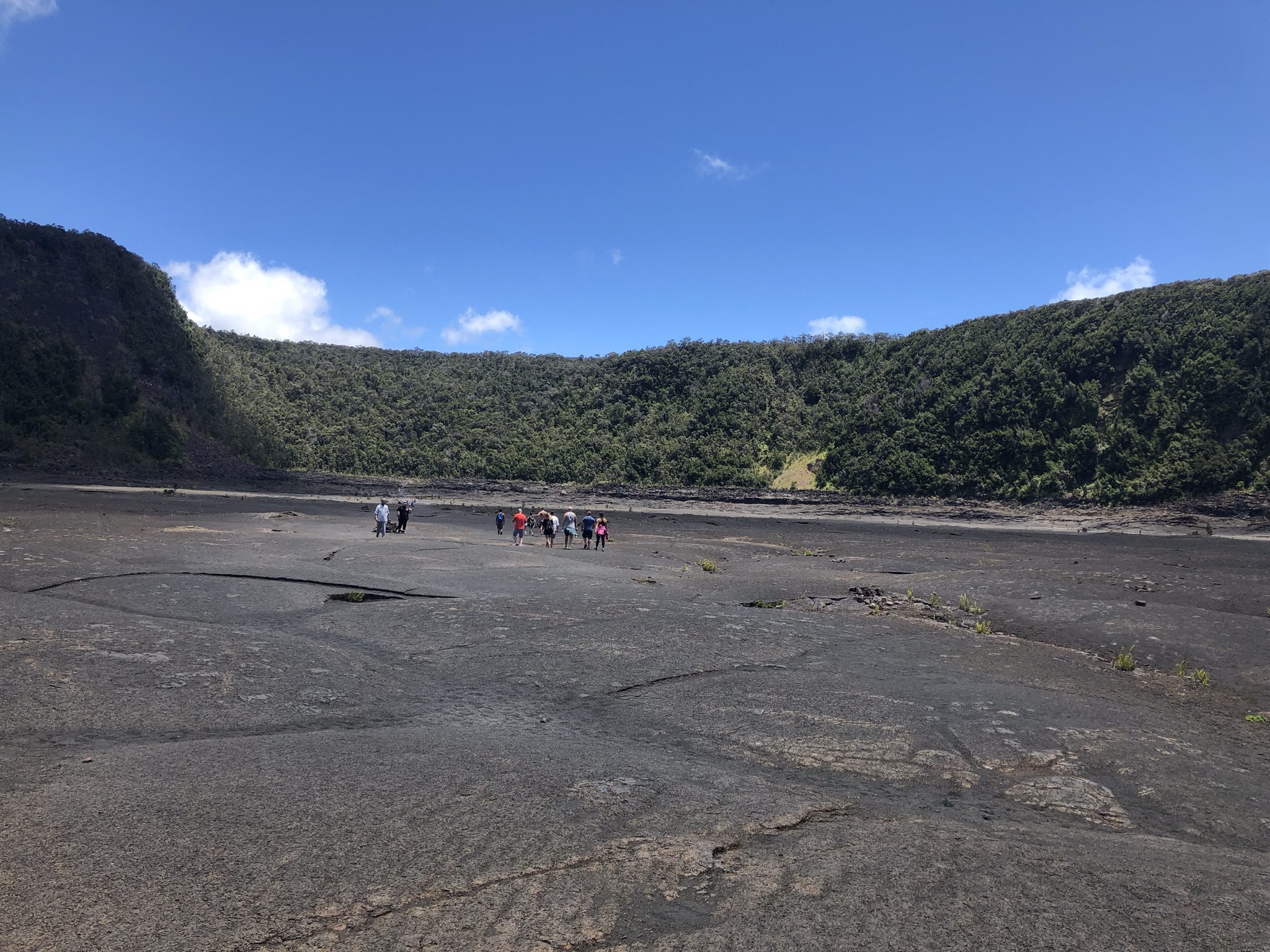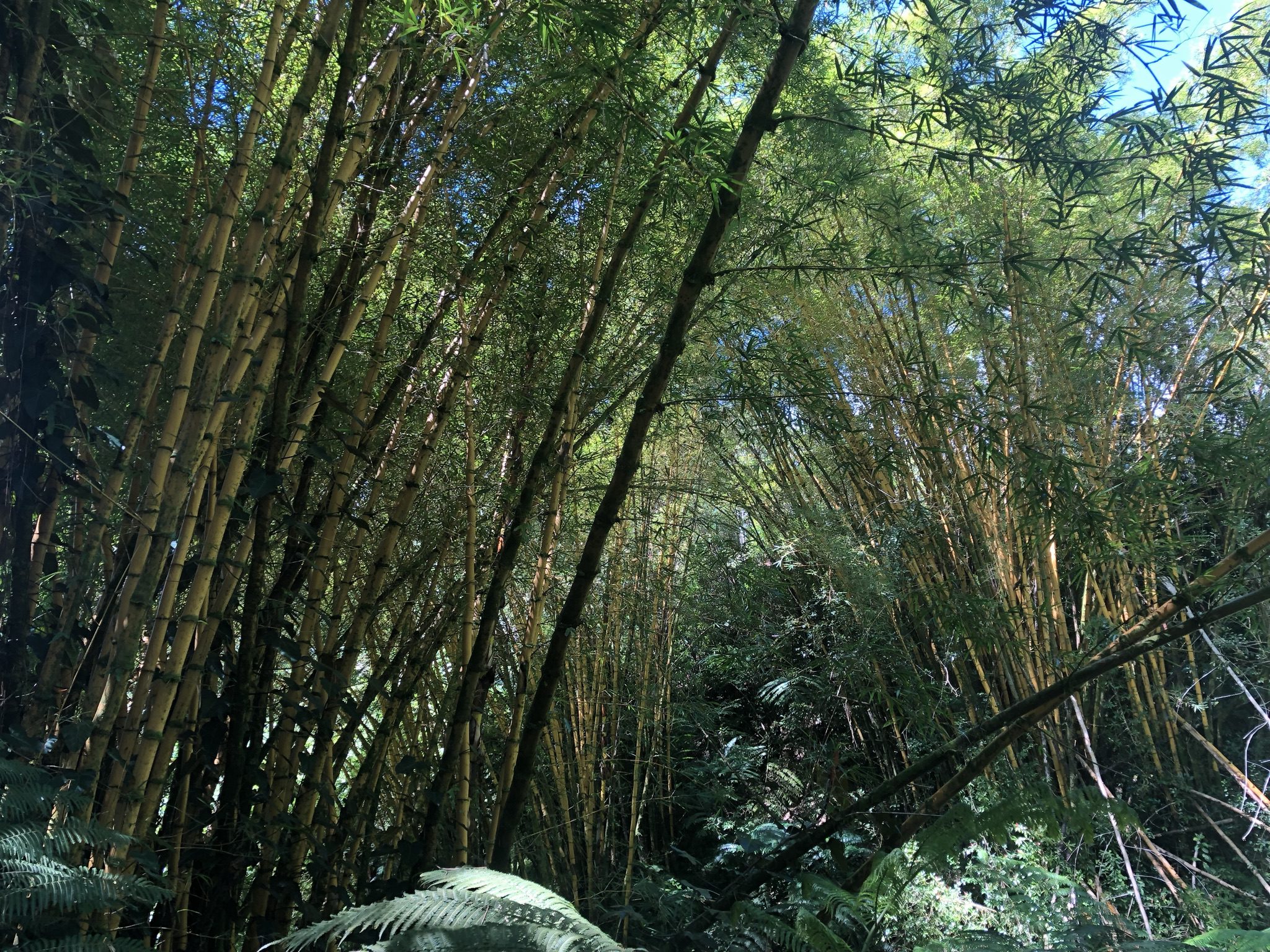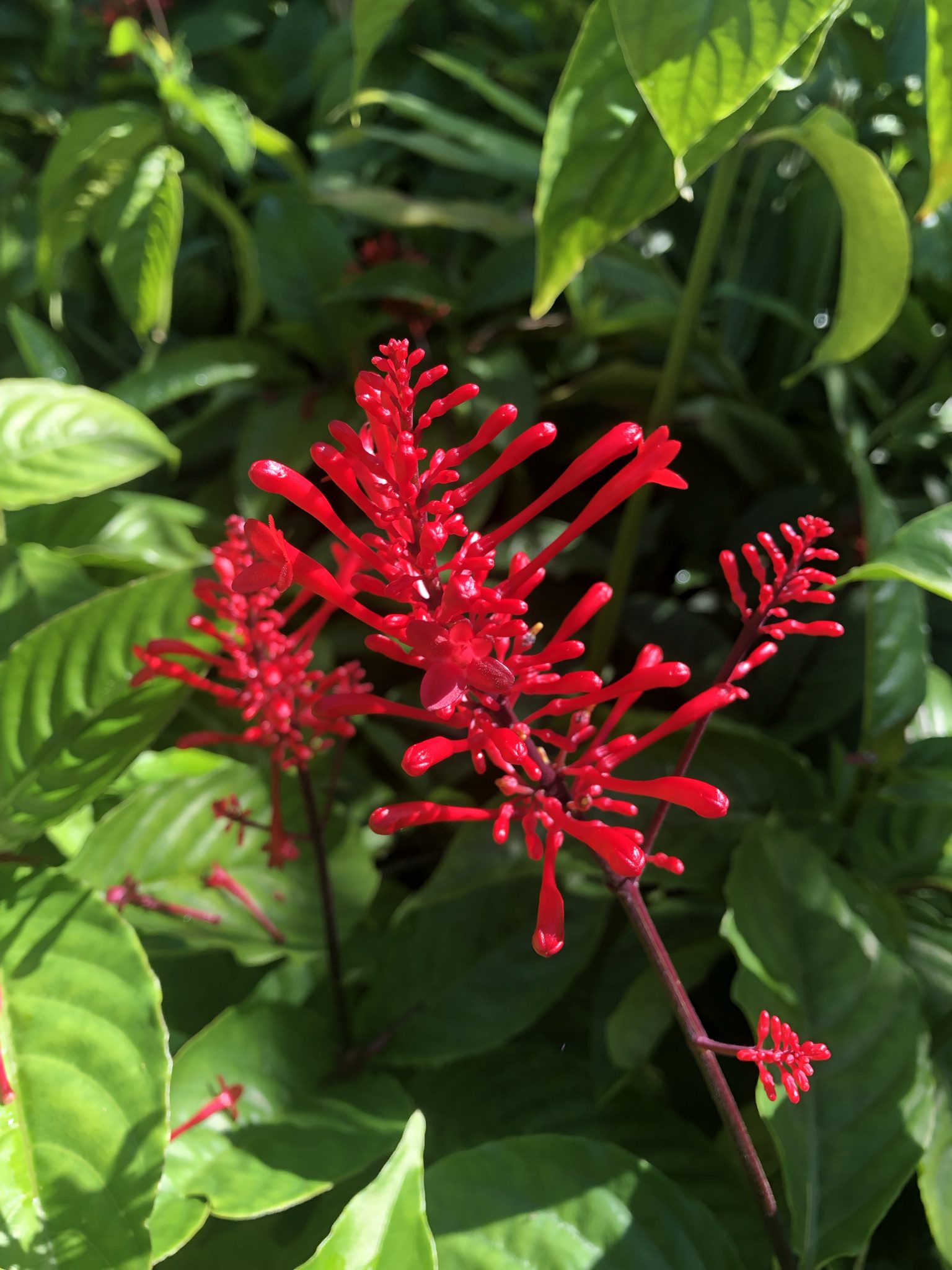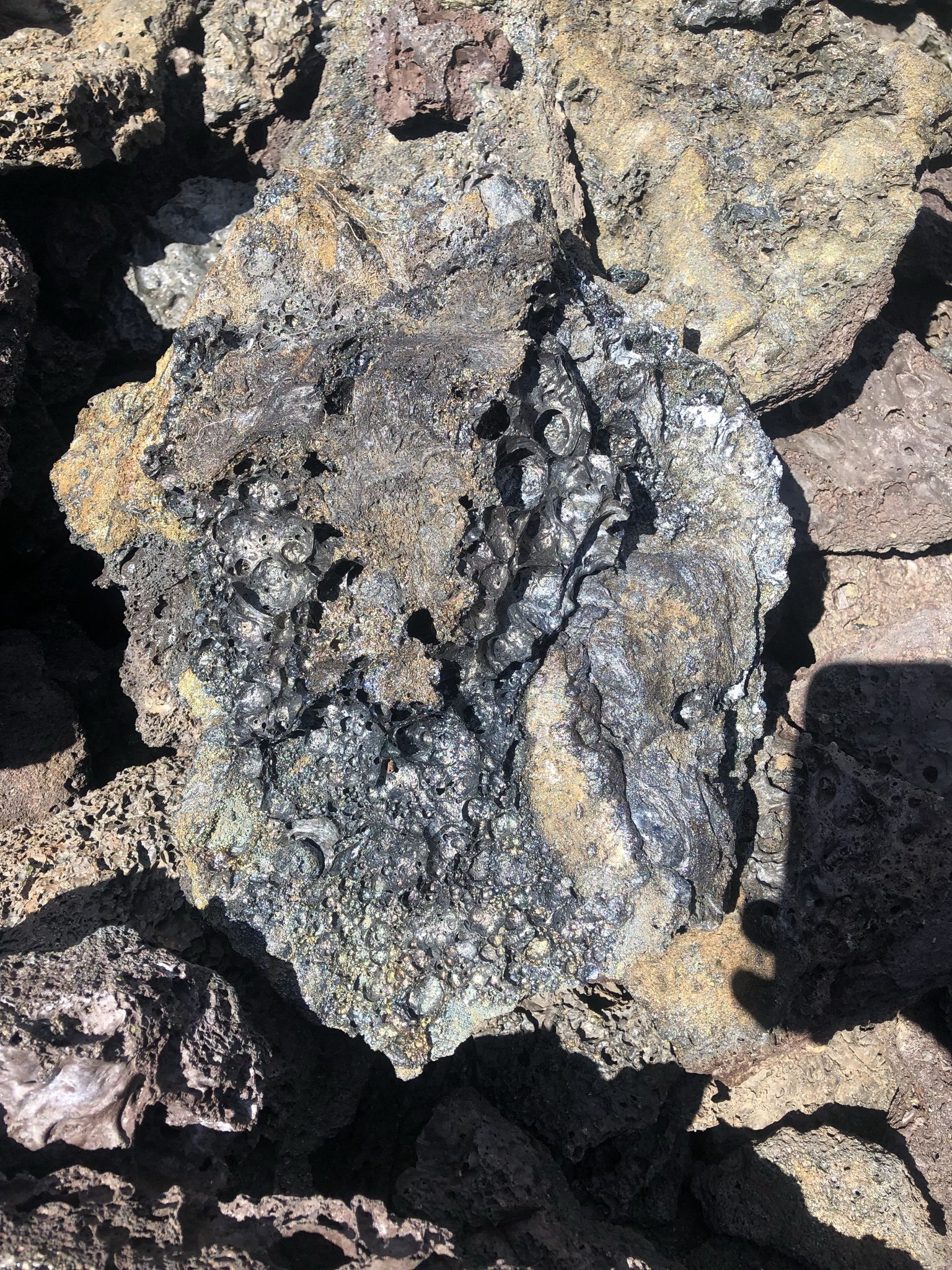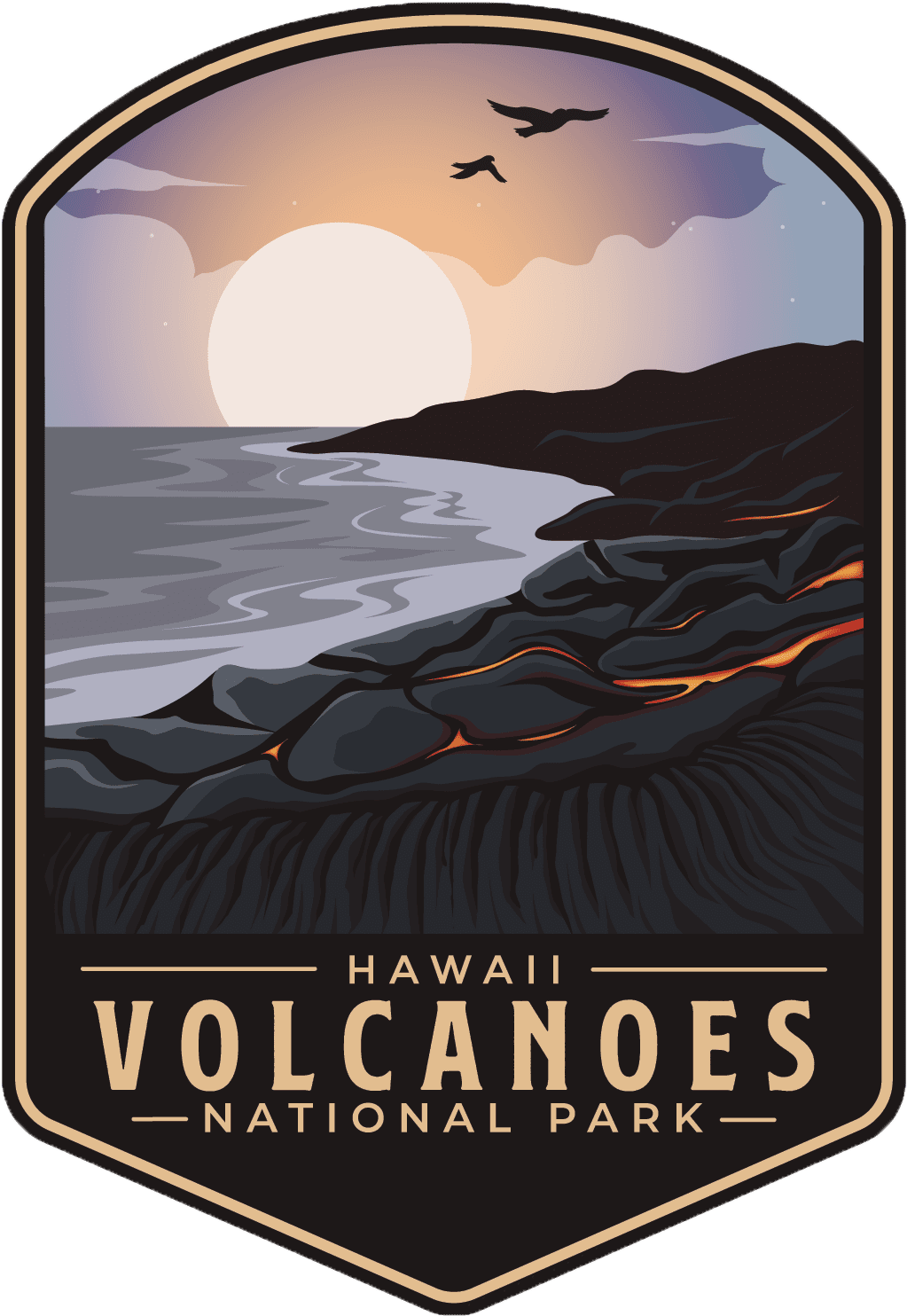
Hawai’i Volcanoes National Park
Hawai’i Volcanoes National Park, located on the Big Island of Hawaii, showcases the dramatic landscapes shaped by volcanic activity. It is home to two of the world’s most active volcanoes, Kīlauea and Mauna Loa. Visitors can explore lush rainforests, ancient lava tubes, and witness real-time volcanic activity. The park preserves unique ecosystems and offers a glimpse into the island’s fiery creation. It’s a UNESCO World Heritage site and an essential destination for those interested in geology, nature, and Hawaiian culture
Park Information Quick Facts
Location: Hawaii, Big Island
Park Size: 335,259 Acres
Time Needed: 1-2 Days
Best Season: Any
Must Do: Hike to top of the volocano
Lodging: Airbnb and hotel lodging all around the park
Pro Tips: The Trails down and out of the main crater are tough. Be ready to work to get into the crater and out.
Plan Your Hawai'i Volcanoes Adventure Today!
Hawai’i Volcanoes National Park offers a unique opportunity to witness the dynamic forces of nature, with active volcanoes, diverse ecosystems, and stunning landscapes. Visitors can explore lava fields, lush rainforests, and volcanic craters, while learning about the island’s rich cultural and geological history. The park provides unforgettable experiences, from hiking trails that lead to breathtaking vistas to stargazing under the dark skies of the Big Island.

Getting There
How to Travel to Hawai'i Volcanoes National Park
Traveling to Hawai’i Volcanoes National Park begins with flying into one of Hawaii’s main airports, most commonly Kona International Airport (KOA) or Hilo International Airport (ITO) on the Big Island. Hilo is closer, located about 30 miles from the park, while Kona is around 96 miles away, offering more flight options but requiring a longer drive. Renting a car is essential, as public transportation options are limited.
From Hilo, the park is about a 45-minute drive along Highway 11, making it a quick and scenic route through lush tropical landscapes. From Kona, the drive takes around two to three hours, depending on traffic and stops. You’ll travel along the same Highway 11, passing through small towns, coffee plantations, and stunning coastal views.
Once inside Hawai’i Volcanoes National Park, you’ll have access to over 300,000 acres of natural wonders, including Kīlauea and Mauna Loa, two of the world’s most active volcanoes. There are plenty of driving routes within the park, such as Crater Rim Drive, which provides easy access to popular viewpoints, hiking trails, and visitor centers.
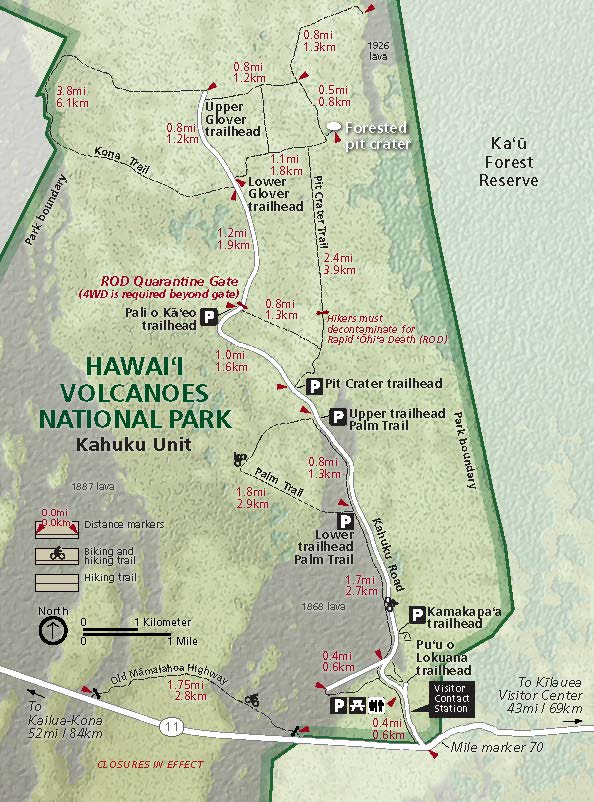
Campsites
Hawai’i Volcanoes National Park offers a unique camping experience at the Nāmakanipaio Campground, located at an elevation of 4,000 feet amidst a lush eucalyptus forest. This drive-in campground provides a peaceful setting with basic amenities such as picnic tables, fire pits, and restrooms. For those looking to camp under the stars but prefer more comfort, there are also rustic cabins available for rent. The cooler temperatures at this elevation provide a refreshing escape from the warmer coastal areas, and the proximity to the park’s main attractions makes it easy to explore volcanic craters, lava tubes, and scenic hiking trails during the day.
Nāmakanipaio Campground
A drive-in campground located at 4,000 feet elevation, offering tent camping sites and rustic cabins. The campground is situated in a eucalyptus forest and includes picnic tables, fire pits, and restrooms.
Kulanaokuaiki Campground
A remote, primitive campsite located off Mauna Loa Road, at an elevation of about 3,200 feet. It offers nine first-come, first-served sites with no water or fire pits, so campers must be self-sufficient. Vault toilets are available.
Backcountry Campsites
For those seeking more solitude and adventure, there are several backcountry camping opportunities, including at the Nāpau, Pepeiao, and Halapē campsites. These require a backcountry permit and are accessible by hiking. Campers need to be prepared to pack in and out all supplies and be aware of the rugged terrain and changing volcanic conditions.
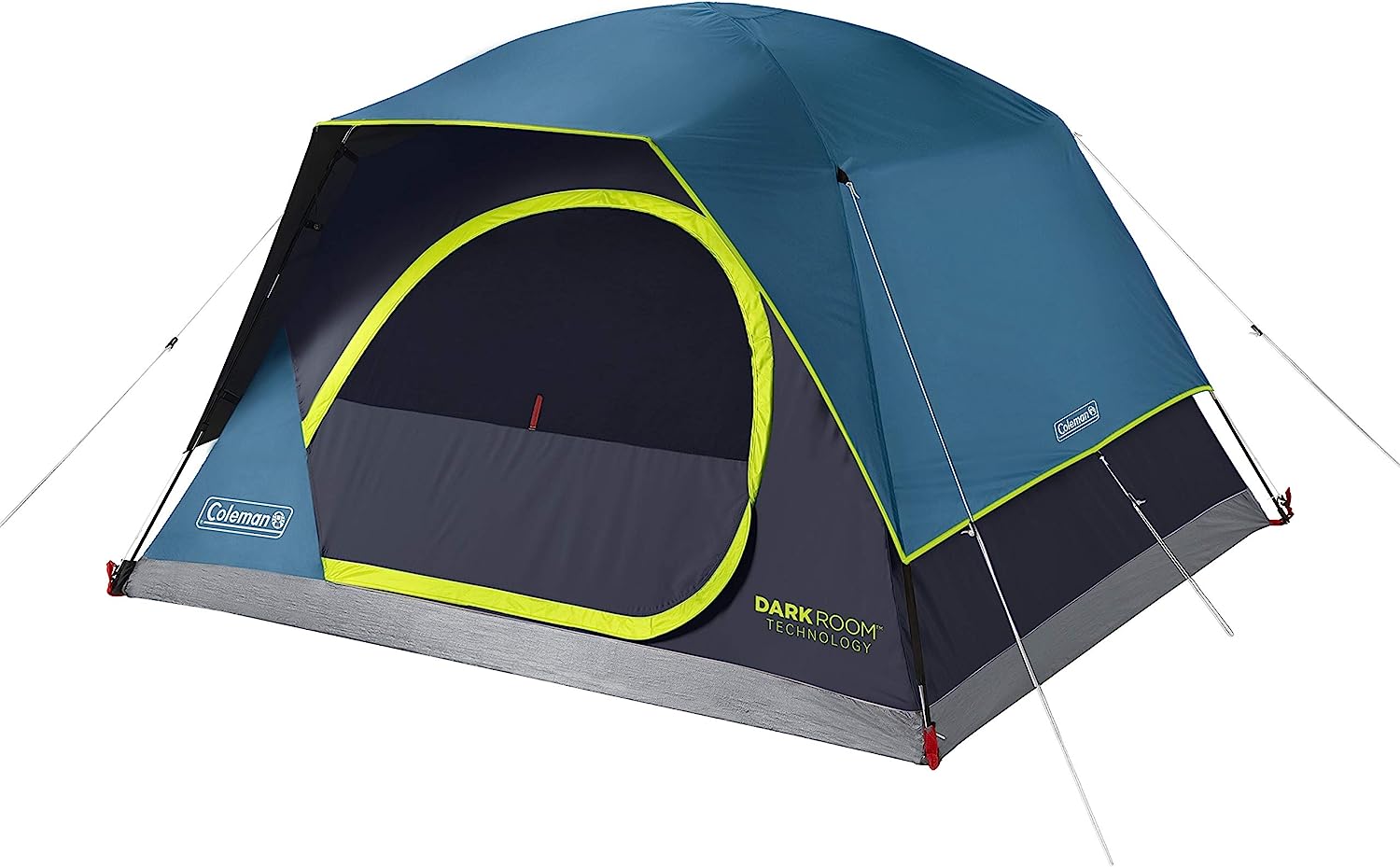
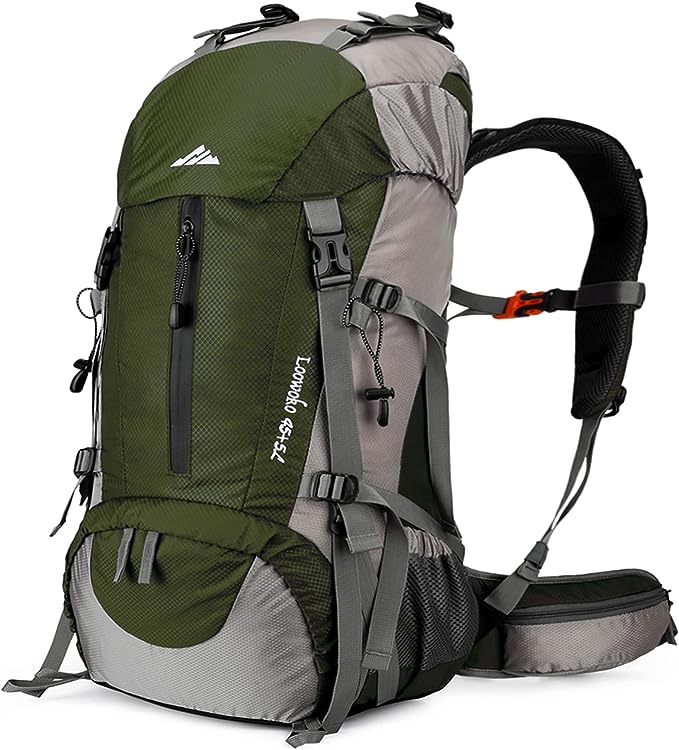
Important Notes
-
Weather Conditions: The weather at the park can be unpredictable, especially at higher elevations where it gets cooler and wetter, particularly at night. Pack for a range of conditions, including rain gear and warm clothing.
-
Volcanic Activity: The park’s dynamic volcanic landscape means that conditions can change quickly. Be aware of air quality, trail closures, and any potential hazards from active volcanic areas. It’s essential to check updates regularly and follow all safety guidelines.
-
No Water at Kulanaokuaiki: Kulanaokuaiki Campground is primitive and does not have drinking water available, so campers must bring their own supply and be prepared for self-sufficiency.
Popular Hiking Trails
Kīlauea Iki Trail
- A 4-mile loop that takes you through a lush rainforest and down to the floor of a hardened lava lake, formed by a 1959 eruption. The trail offers impressive views of the crater and surrounding areas.
Devastation Trail
- A 1-mile round-trip trail that explores the barren landscape created by a 1959 eruption. It’s an easy, paved trail, showcasing the destructive power of volcanic eruptions.
Crater Rim Trail
- A 11-mile trail that loops around the summit caldera of Kīlauea. This trail passes steam vents, overlooks, and scenic points. Sections of the trail may be closed due to volcanic activity.
Halemaʻumaʻu Trail
- A 1.6-mile round-trip trail that descends from the crater rim down to the floor of Kīlauea Caldera. The trail offers views of steam vents and volcanic formations.
Pu'u Loa Petroglyphs Trail
- A 1.4-mile round-trip trail that leads to the largest petroglyph field in Hawaii, featuring ancient carvings in lava rock that date back hundreds of years.
Mauna Ulu Trail
- A 2.5-mile round-trip hike that takes you across a lava landscape formed by the Mauna Ulu eruption between 1969-1974. You can hike to the summit of the Mauna Ulu vent for panoramic views of the volcanic terrain.
Thurston Lava Tube (Nāhuku)
- A short 0.4-mile loop that leads to a massive lava tube, formed by a volcanic flow. The trail goes through a lush forest before reaching the illuminated tube that visitors can walk through.
Kipukapuaulu (Bird Park) Trail
- A 1.2-mile loop trail through a forested area rich in native Hawaiian bird species and plant life, offering a peaceful nature walk.
Nāpau Trail
- An 14-mile round-trip trail that leads through diverse landscapes, from forested areas to lava flows. This trail passes the Mauna Ulu crater and offers distant views of Puʻu ʻŌʻō.
Keanakāko‘i Crater Trail
- A 1.1-mile round-trip walk along the rim of Kīlauea’s caldera that leads to the Keanakāko‘i Crater, which was filled with lava during a 2018 eruption.
Hiking Trails in Hawai'i National Park
Hiking in Hawai‘i Volcanoes National Park offers a one-of-a-kind experience, with trails that take you across volcanic landscapes and through lush rainforests. The park provides a range of hikes for all skill levels. For beginners, the Kīlauea Iki Trail is a moderately easy 4-mile loop that descends into a former lava lake, offering a close-up look at solidified lava flows and volcanic features. Intermediate hikers might enjoy the Devastation Trail, a short and relatively easy hike across cinder fields created by past eruptions. For those seeking more of a challenge, the Mauna Ulu trail leads through lava fields and craters, providing a longer, more strenuous hike with incredible geological features along the way.
Trail Difficulty Levels
Scenic Views and Highlights
The scenic views in Hawai‘i Volcanoes National Park are otherworldly, with stark volcanic landscapes contrasting with lush rainforests and ocean views. The Crater Rim Trail offers breathtaking views of the Kīlauea Caldera, a massive volcanic crater that has been active in recent years, with steam vents and sulfur deposits adding to the dramatic scenery. On the Napau Trail, hikers can witness the raw beauty of untouched lava fields stretching toward the horizon, and on clear days, you can see all the way to the ocean. The park’s mix of black lava rock, tropical greenery, and the Pacific Ocean in the distance creates a visually stunning environment unlike any other.
Gear We Used

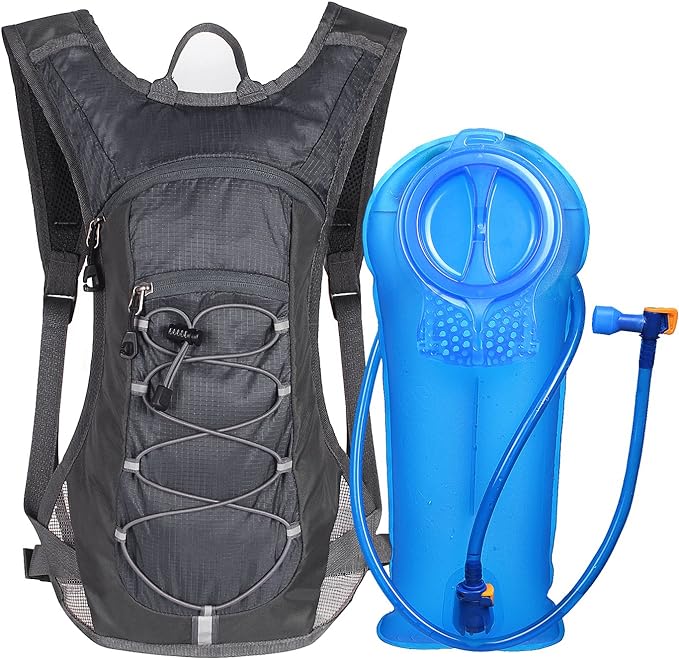
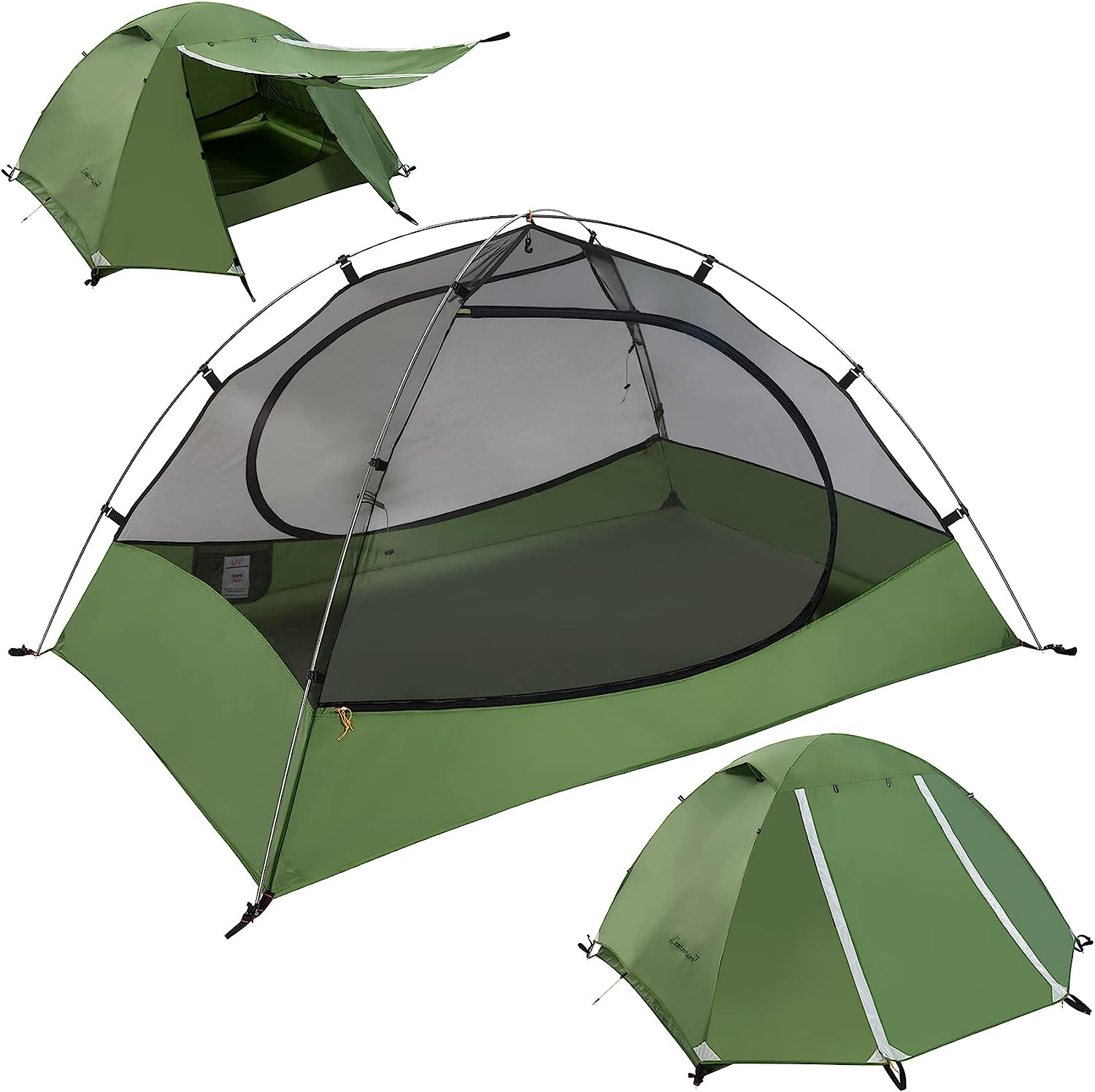
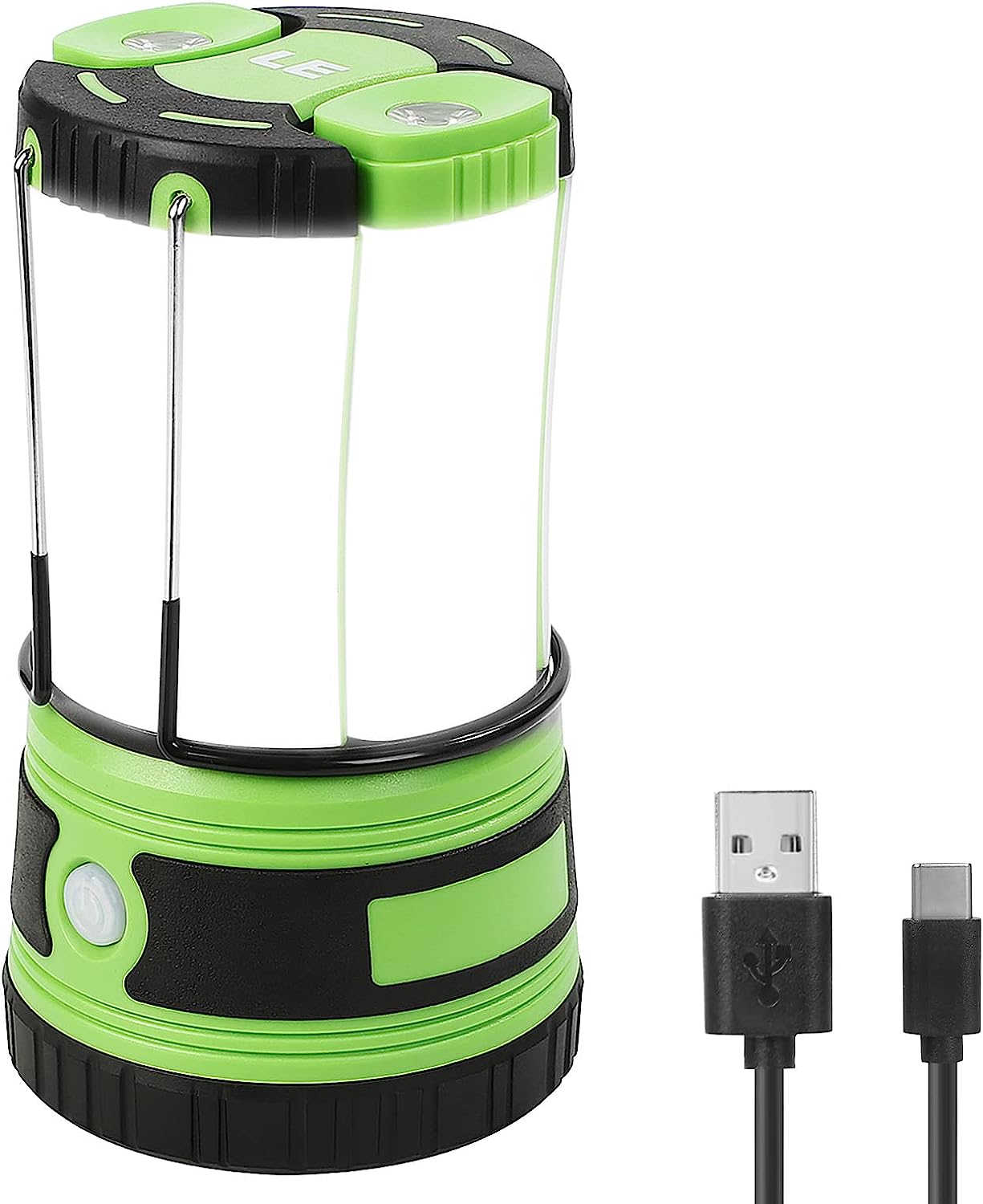
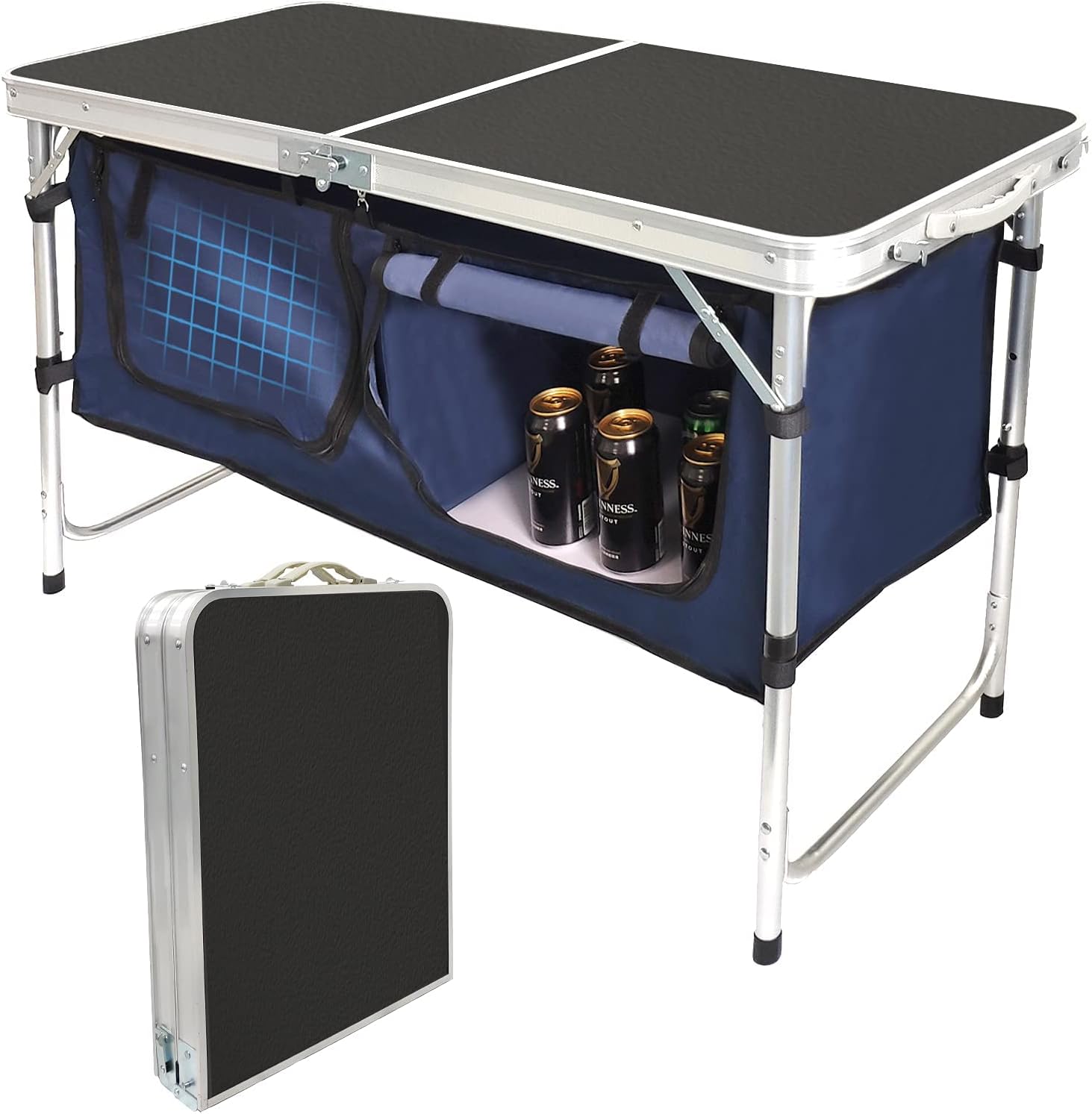
Hawai'i Volcanoes National Park
Hawai’i Volcanoes National Park is a must-visit destination for anyone seeking adventure and natural beauty. The park is home to two of the world’s most active volcanoes, Kīlauea and Mauna Loa, offering visitors a unique opportunity to witness the powerful forces of nature at work. Its diverse ecosystems, ranging from lush rainforests to stark volcanic landscapes, provide a stunning backdrop for hiking, wildlife viewing, and photography. Additionally, the park’s rich cultural history, including ancient Hawaiian legends and archaeological sites, adds depth to the experience.
Must-Do Activities
Explore the Kīlauea Iki Trail:
This iconic 4-mile loop takes you down into the Kīlauea Iki Crater, where you can walk across the floor of a hardened lava lake. The trail offers stunning views of the surrounding rainforest and volcanic landscape, making it a favorite for hikers.
Experience the Crater Rim Drive:
This scenic drive circles the Kīlauea Caldera, offering multiple overlooks and stops where you can view steam vents, craters, and the ever-changing landscape of the park. Key points of interest include the Jaggar Museum, which provides insights into volcanic activity and stunning views of the caldera.
Visit the Thurston Lava Tube (Nāhuku):
A short and easy hike leads you through a lush forest to the impressive Thurston Lava Tube. Walking through this massive underground tunnel, formed by flowing lava, provides a fascinating glimpse into the park’s volcanic history.

